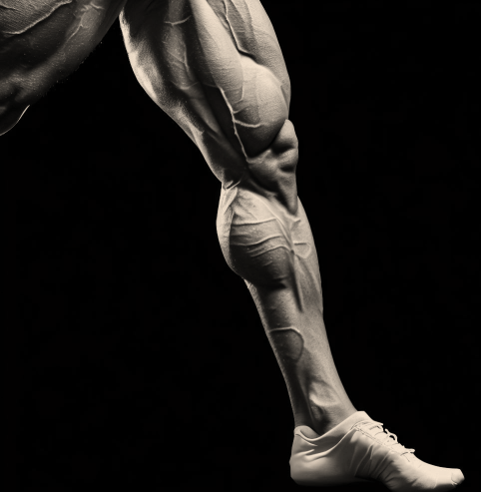Leg Press vs. Squats: An Introduction
When it comes to building strength and muscle in the lower body, two exercises often stand out in the fitness community: the leg press and squats. Both exercises are staples in leg workouts, and they are frequently incorporated into strength training routines by athletes, bodybuilders, and fitness enthusiasts alike. But which one is superior? Or is there even a clear winner in this debate?
Brief Overview of Both Exercises:
- Leg Press: A machine-based exercise where the individual sits down and pushes a weighted platform away using their legs. It targets the quadriceps, hamstrings, and glutes.
- Squats: A compound movement that can be performed with or without weights. It engages a wider range of muscles, including the quadriceps, hamstrings, glutes, lower back, and core.
Importance of Leg Workouts in Overall Fitness:
The legs are home to some of the largest muscle groups in the body. Regular leg workouts enhance lower body strength, overall body composition, metabolic rate, and athletic performance. Effective leg exercises like the leg press and squats are crucial.
In the subsequent chapters, we will delve deeper into the anatomy of these movements, their benefits, potential risks, and how to choose between them based on specific fitness goals.
Anatomy of the Movements
Understanding the muscles engaged during leg press and squats is crucial. Here’s a breakdown of the primary muscles targeted by each movement:
Muscles Targeted by Leg Press
- Quadriceps: Heavily engaged, especially when the feet are placed lower on the platform.
- Hamstrings: Act as stabilizers during the leg press.
- Glutes: Activated, especially when pushing through the heels.
- Calves (Soleus and Gastrocnemius): Engaged when pushing the weight.
Muscles Targeted by Squats
- Quadriceps: Heavily engaged, especially during the upward phase.
- Hamstrings: More actively engaged in squats than in the leg press.
- Glutes: Renowned for their activation during squats.
- Erector Spinae: Work to keep the back straight.
- Core (Rectus Abdominis, Obliques): Engaged throughout to stabilize the body.
- Adductors and Abductors: Help stabilize the legs during the squat.
In conclusion, while both exercises target similar muscle groups, squats offer a more comprehensive full-body workout. The choice should be based on individual goals, physical condition, and preference.
Benefits of Leg Press
The leg press has its own set of unique advantages:
- Isolation of Specific Muscle Groups: Adjusting foot placement can emphasize different muscle groups.
- Safety and Control for Beginners or Those with Injuries: Reduced risk of incorrect form and beneficial for injury rehabilitation.
- Variations and Adjustments for Different Fitness Levels: Adjustable resistance and variations like the single-leg press.
- Less Core Engagement Can Be an Advantage: Focused leg workout.
- Beneficial for Bodybuilders: Great for muscle hypertrophy.
Benefits of Squats
Squats offer a plethora of benefits:
- Full-body Workout and Functional Strength: Engage multiple muscle groups and enhance functional fitness.
- Flexibility and Balance Improvement: Improve joint health and balance.
- Variations for Different Goals and Levels: Different squat variations cater to various needs.
- Core Engagement and Strengthening: Stronger and more toned midsection.
- Caloric Burn and Metabolic Boost: Higher caloric expenditure and post-exercise burn.
- Bone Density and Hormonal Benefits: Increase bone density and stimulate hormone release.
Potential Risks and Considerations
Proper form and technique are crucial to minimize risks associated with each exercise.
Leg Press: Common Mistakes and Injuries
- Improper Foot Placement
- Locking the Knees
- Using Excessive Weight
- Lack of Full Range of Motion
Squats: Common Mistakes and Injuries
- Knees Caving Inward
- Lifting the Heels
- Rounding the Back
- Going Too Deep
- Using Improper Weight Placement
Which is Better for Specific Goals?
The choice between leg press and squats should be based on individual needs and goals:
- Strength Building: Leg press for raw strength, squats for functional strength.
- Muscle Hypertrophy: Leg press for targeted growth, squats for holistic development.
- Athletic Performance: Leg press for specific muscles, squats for overall performance.
- Endurance and Stamina: Both can boost stamina and endurance.
- Flexibility and Mobility: Squats are superior for mobility.
- Rehabilitation and Special Conditions: Leg press for injury recovery, squats for mobility and strength.
Conclusion
The debate between leg press and squats is a testament to the efficacy of both exercises. Each has its unique set of advantages, and the choice often boils down to individual preferences, goals, and physical conditions. Whether you’re pushing weights on a leg press machine or squatting, the most important thing is to listen to your body, stay consistent, and enjoy the journey towards stronger legs.
Discover the latest tools and innovations to optimize your leg workouts by browsing our detailed guides in the equipment category.

